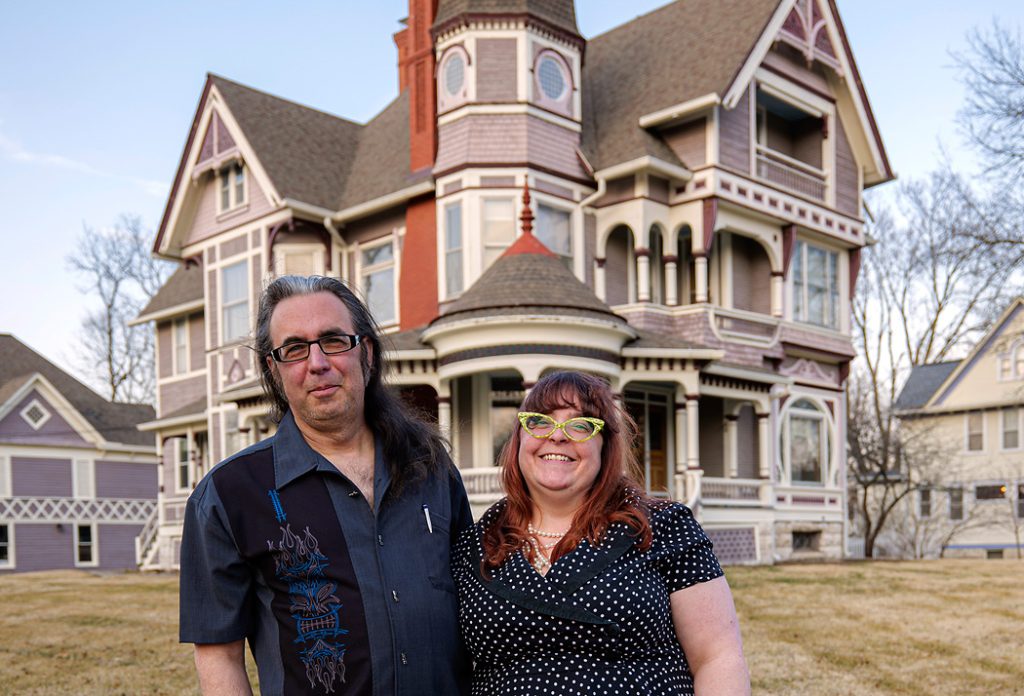
Richard and Kendra Lint moved from Portland, Oregon, to Fairfield, Iowa, for a house—their dream home, in fact. Known to many Fairfielders as “the Purple House,” “the Sloca House,” or “the Ball House” (identified either by its distinctive paint job or its former long-term owners), the historic three-story Queen Anne mansion reigns in picturesque splendor over the corner of Burlington Avenue and D Street. Designed by popular American architect George Franklin Barber (1854–1915), the eye-catching home, with fantastic stained glass windows, a wrap-around porch, and a polygonal turret, was built by Fairfield hotelier James A. Beck in 1896.
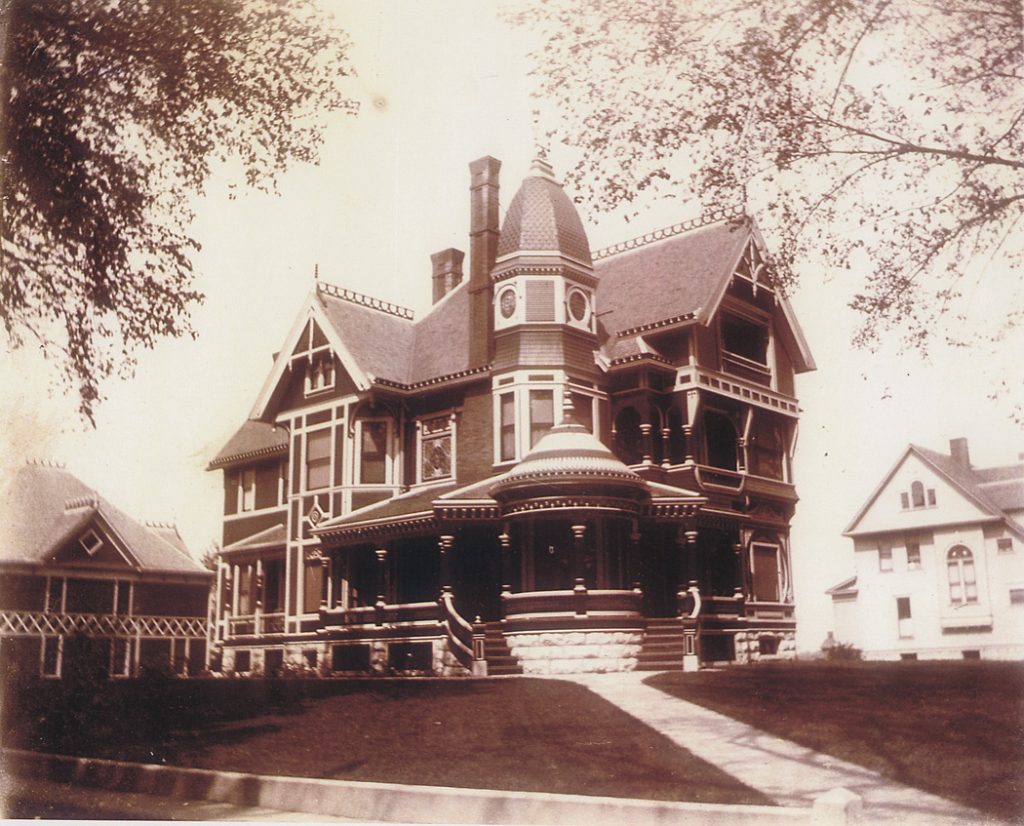
One of the most successful architects of his time, Barber used mail-order catalogs to sell house designs in every state and all over the world. Dozens of Barber homes, including Fairfield’s James A. Beck House, are listed in the National Register of Historic Places.
Beck sold the house to Mr. and Mrs. Joseph Ball in 1913. The Balls lived in the house until their deaths in 1962. The Sloca family bought the house in 1964 and sold it in 2001 to Mitchell Bailey, who sold it in 2002 to Mark and Donita Woodruff. The Woodruffs sold the house to Patricia Miller in 2007, and the house was put on the market after her death in 2017.
Instagram Find
Kendra has always dreamt of owning a Barber house, so when the James A. Beck House was added to @cheapoldhouses, an Instagram account she follows, Kendra was immediately interested. Having driven past another Barber house on her way to work every day, she’d fallen in love with the architectural style, but the Portland price tag was prohibitive. She and Richard drove out to Iowa to see the Beck house, check out the school district for their teenager, and research business site options.
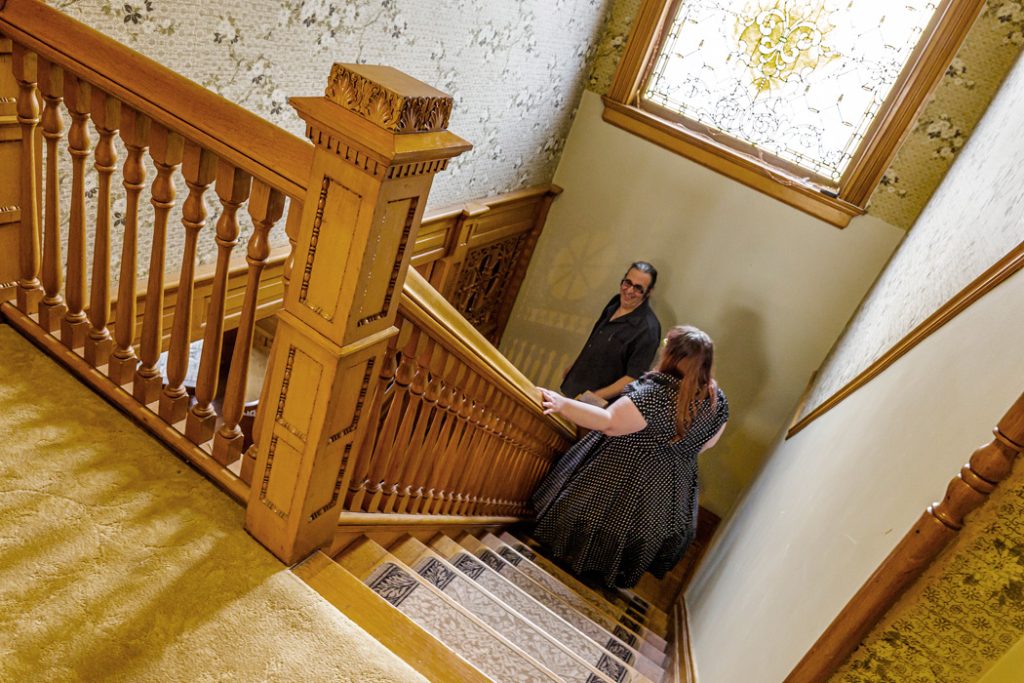
For Kendra, it was love at first sight. As soon as they walked in the front entrance, she whispered to Richard, “Can we buy it now?” He insisted on playing it cool, finishing the tour, and inspecting the property, but he ended up being equally impressed. After selling their Portland home and packing up their business, the Lints made the trek back to Iowa, closed on the house July 6, 2020, and started their loving process of renovation and reconstruction, rotating between exterior and interior projects.
Relocating to the Midwest
Business owners for over 20 years, the Lints renovate or reproduce artwork for vintage pinball and arcade machines, so they have a skill set that translates well to historic house renovation. The bulk of their business is online, so it was easy to pick up and move.
Initially, they planned on setting up their business in the old carriage house, but Richard says it still smells like horses, has troughs filled with decomposing hay, and has served as a storage area, so it needs to be thoroughly cleaned out. Long believed to predate the Beck house, the carriage house was actually built by Beck. It’s a common misconception that the carriage house was built by the property’s previous owner, Judge Charles Negus, in 1875. Richard confirmed this when he discovered a May 1895 Fairfield Ledger that reported Beck built the barn and carriage house in 1895, and then hosted a celebratory party inside on May 30. It was not part of the original house as previously thought. Beck also demolished Negus’s house in 1892 to build his new three-story mansion.
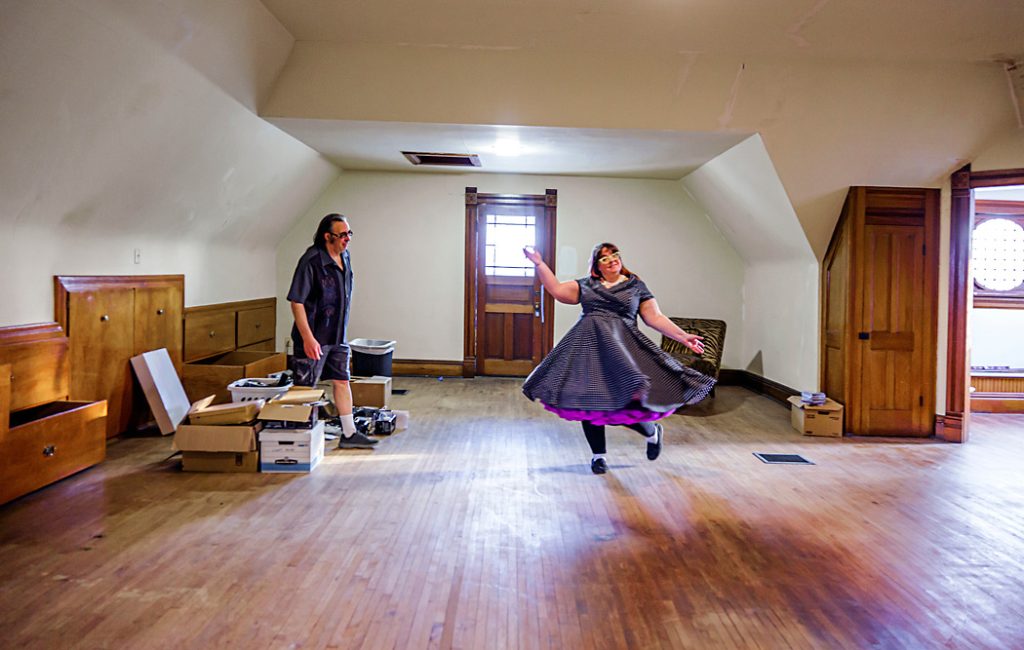
The Lints ended up buying the building that housed the KRUU radio station for their business, and they say that moving to Iowa has actually saved them money. Their new Midwest location has significantly cut down on shipping costs. They even have a previously unrealized business connection to Fairfield—they’ve known Twin Galaxies founder Walter Day (an icon in the gaming world) for a long time.
“I knew he was from Iowa, but I didn’t realize he was from Fairfield until I kept running into him at the grocery store,” Kendra laughs. “I asked, ‘What are you doing in my town?’ and he said it’s been his town much longer.”
Restoration Accuracy
Richard and Kendra are both committed to maintaining as much historical accuracy as possible with their furniture and design choices. They’re very grateful to previous owners for dealing with the necessary reroofing and boiler replacement so they can focus on aesthetic renovations. Their ground-floor furniture is all period specific, with a beautiful, working 1890s pump organ in pride of place, an antique dining set that’s been in Kendra’s family for generations, and vintage settees, all complementing the ornamental woodwork and intricately embellished fireplace mantels. They’re currently refurbishing a clawfoot bathtub for the upstairs bathroom.
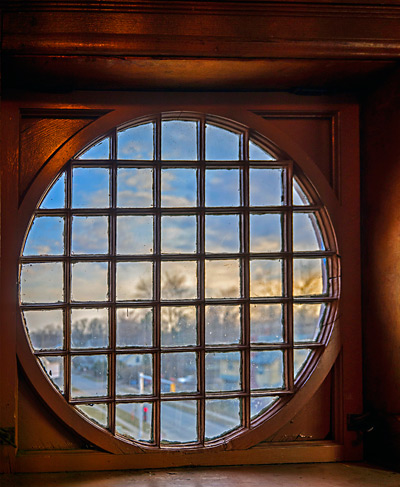
Happily, the house and its grounds have yielded treasure troves—earlier owners removed the ornate 19th-century glass light fixtures in favor of 20th-century ceiling fans, but packed the old light fixtures away in a closet, while a variety of architectural detritus, including most of the large glass windows for a conservatory that used to be installed above the porte cochère, was stored in the carriage house. The Lints have cleaned and rehung the light fixtures. Once they unearth more information about the conservatory, which, oddly, no one seems to remember, they plan to rebuild that as well. Richard says that gas and radiator pipes go out to the top of the porte cochère, with a space for a radiator, and there are clearly spaces all along the porte cochère where the glass windows were installed. The first pictorial evidence they found was an old 19th-century photo of a neighbor sitting on his porch holding a baby, with the edge of the conservatory visible in the background. They have since uncovered more pictures of the conservatory as a whole.
Online Detective Work
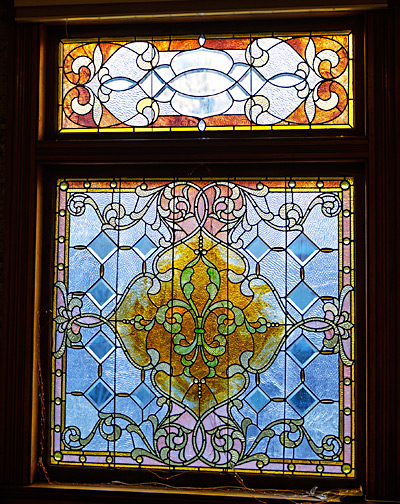
Maintaining historically accurate renovations in the spirit of the house requires a certain amount of sleuthing. Richard says 21st-century internet resources have made it much easier to look up old newspaper references and to connect with people who lived in or remember the house via social media.
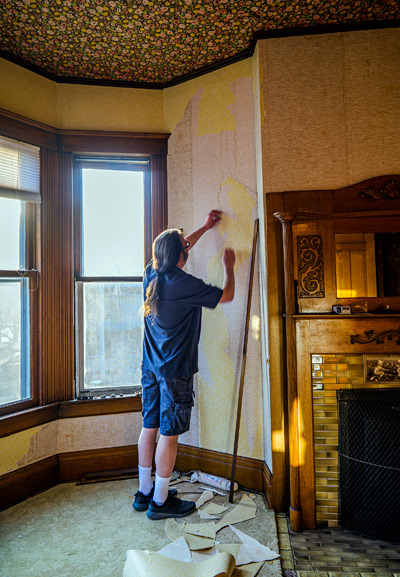
He and Kendra started the James A. Beck House Facebook page to detail and document their renovation progress and share the stories and historical tidbits they’ve discovered about the house and its previous owners. They introduce their page by saying, “With a great house comes great responsibility.” The Lints are very conscious that they are stewards of the house, and feel the house really belongs to the town.
Their page offers a place to share stories about the house, gives glimpses into current projects, and poses questions about mysteries the Lints have uncovered in their renovation process. People have shared memories of attending catered Christmas parties, visiting the elderly Mrs. Ball for a chance at picking out a treat from her drawer full of candy, roller skating with the Sloca children in the third-floor ballroom, and taking piano lessons from Mrs. Joan Sloca, who also held recitals at the house.
Fairfielders’ Memories
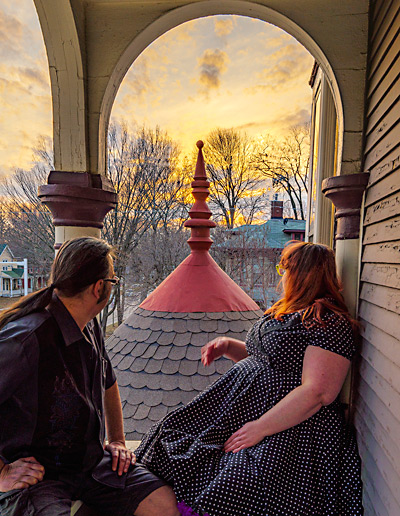
The Lints are constantly unearthing six-degree-of-separation-type stories of how Fairfield residents are connected with the house. Someone had a before-school job for the Ball family, pumping the manual water pump in the basement to fill up the third-floor water tank for the flush toilets. An elderly woman says her mother worked for the Balls as a housekeeper in the 1930s. A current Fairfield Carnegie Museum Board member related to the Ball family is also descended from a violinist hired to play at parties hosted by Beck in the 1890s and Ball in 1922. A friend who works at both the Carnegie Museum and a local bank discovered some historical photographs and old canceled checks signed by James A. Beck. The Lints are storing historical ephemera in an antique safe in the basement, creating a sort of time capsule of the house’s history.
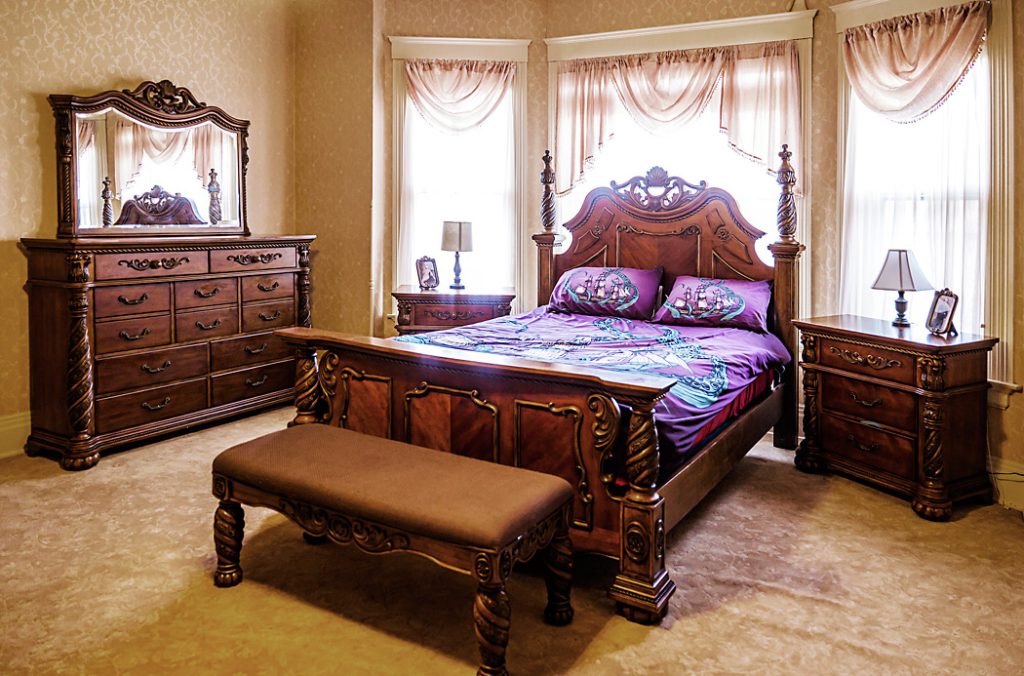
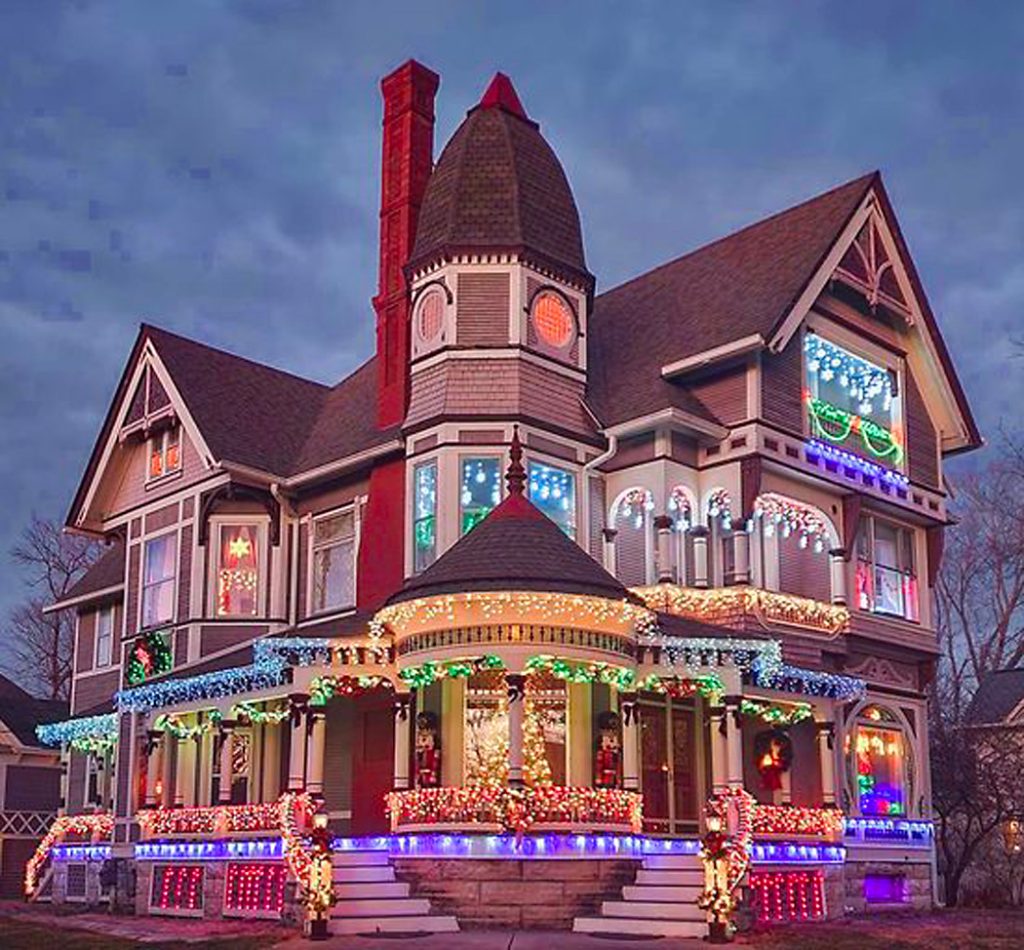
While the Lints have no plans to offer official tours, they are considering having an annual partial open house at Halloween, so people can admire the interior first-floor decorations (which are less accessible than the spectacular exterior Christmas light display) and get a sense of the house.
To follow the renovation progress or to share stories, go to James A. Beck House on Facebook.
